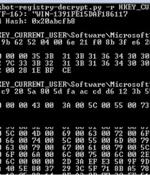Security News > 2022

Phishers are creating Adobe Creative Cloud accounts and using them to send phishing emails capable of thwarting traditional checks and some advanced threat protection solutions, Avanan security researcher Jeremy Fuchs warns. This new wave of attacks started in December 2021, and they are exploiting the fact that Adobe's apps are designed to foster collaboration by sharing documents.

Attackers are leveraging Adobe Creative Cloud to target Office 365 users with malicious links that appear to be coming legitimately from Cloud users but instead direct victims to a link that steals their credentials, researchers have discovered. Though attackers are primarily targeting Office 365 users - a favorite target among threat actors - researchers have seen them hit Gmail inboxes as well, Jeremy Fuchs, cybersecurity research analyst at Avanan, told Threatpost.

Microsoft's first Patch Tuesday of 2022 has, for some folk, broken Hyper-V and sent domain controllers into boot loops. As well as the broken Hyper-V, popular tech blog Born City noted problems with boot loops on domain controllers, with other versions of Windows Server affected.

Ukrainian police officers have arrested a ransomware affiliate group responsible for attacking at least 50 companies in the U.S. and Europe. A 36-year-old resident of Ukraine's capital Kiev was identified as the leader of the group, which included his wife and three other acquaintances, the police states.

The Dutch Initiative for Vulnerability Disclosure has scored $100k towards its founder's hope of a nationwide bug bounty available for anything at all. The DIVD's $100k cash injection is from infosec outfit Huntress Labs and is part of a grand vision aimed at discouraging individual researchers from dumping vulns online, the organisation's founder Victor Gevers told The Register.

For threat actors, there is a simple calculus at play - namely, what method of attack is a) easiest and b) most likely to yield the biggest return? And the answer, at this moment, is Linux-based cloud infrastructure, which makes up 80%+ of the total cloud infrastructure. These attacks will undoubtedly continue into 2022 and potential targets parties must remain vigilant.

Operators of the GootLoader campaign are setting their sights on employees of accounting and law firms as part of a fresh onslaught of widespread cyberattacks to deploy malware on infected systems, an indication that the adversary is expanding its focus to other high-value targets. "GootLoader is a stealthy initial access malware, which after getting a foothold into the victim's computer system, infects the system with ransomware or other lethal malware," researchers from eSentire said in a report shared with The Hacker News.

Cybersecurity researchers have decoded the mechanism by which the versatile Qakbot banking trojan handles the insertion of encrypted configuration data into the Windows Registry. Although mainly fashioned as an information-stealing malware, Qakbot has since shifted its goals and acquired new functionality to deliver post-compromise attack platforms such as Cobalt Strike Beacon, with the final objective of loading ransomware on infected machines.

The major players in the space were simply too large to facilitate a quick digital transformation, but the arrival of nimble start-ups and changing user habits have really led them to embrace digital banking. The move to online banking presents a larger attack surface for cybercriminals to exploit and attack.

ESET researchers took an in-depth look into the abuse of vulnerable kernel drivers. Among the various types of kernel drivers are "Software" drivers that provide specific, non-hardware related features like software debugging and diagnostics, system analysis, etc.